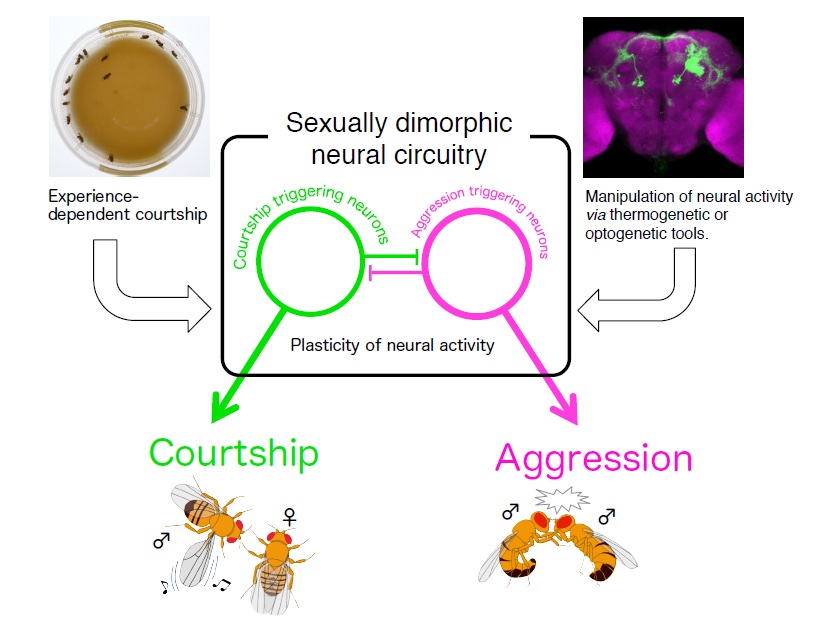Masayuki Koganezawa (Tohoku University)

“Neural basis of the experiment-dependent behavioral shifts in courtship of Drosophila melanogaster“
Recent studies suggest that the sexually dimorphic behaviors, including courtship and aggression, are regulated by a sexually dimorphic neural circuitry. In Drosophila, fruitless (fru) gene plays a central role to establish the sexually dimorphic circuitry. fru encodes a putative transcription factor and its product is expressed only in a male CNS. The male-specific expression of Fru protein controls the sex differentiation of neurons via regulation of target genes. We succeeded in the identification of two fru-expressing neural clusters, P1 and P2b, which can trigger the courtship behavior without target female when thermogenetically activated (Kohatsu and Koganezawa et al., 2011). Courtship of Drosophila is usually considered as an innate behavior. Thus, our results consist with an idea that the courtship behavior is controlled by a genetically programed neural circuitry. On the other hands, an interesting finding was reported in 2014. It was well known that fru null mutant males do not show any courtship when held in isolation. However mutant males acquire the ability to display courtship when grouped together with other flies. This result prompts us to reconsider the idea that courtship of Drosophila is highly innate. The behavioral shift shown by fru mutant males is considered as learning through social interactions. In this research, we will reveal the neural basis of the experience-dependent behavioral shift in courtship of Drosophila by using newly developed thermogenetic or optogenetic tools.
Recent Publications
1. Koganezawa, M., Kimura, K., and Yamamoto, D. (2016) The neural circuitry that functions as a switch for courtship versus aggression in Drosophila males. Current Biology 26, 1395-1403
2. Yamamoto, D. and Koganezawa, M. (2013) Genes and circuits of courtship behaviour in Drosophila males. Nature Reviews Neuroscience 14, 681-692.
3. Kohatsu, S., Koganezawa, M., and Yamamoto, D. (2011) Female contact activates male-specific interneurons that trigger stereotypic courtship behavior in Drosophila. Neuron 69, 498-508.
4. Koganezawa, M., Haba, D., Matsuo, T., and Yamamoto, D. (2010) The shaping of male courtship posture by lateralized gustatory inputs to male-specific interneurons. Curr. Biol. 20, 1-8.
Posted:2016/03/10

